Alexander the Great’s Influence on Intertemporal Art: Four Artistic Representations
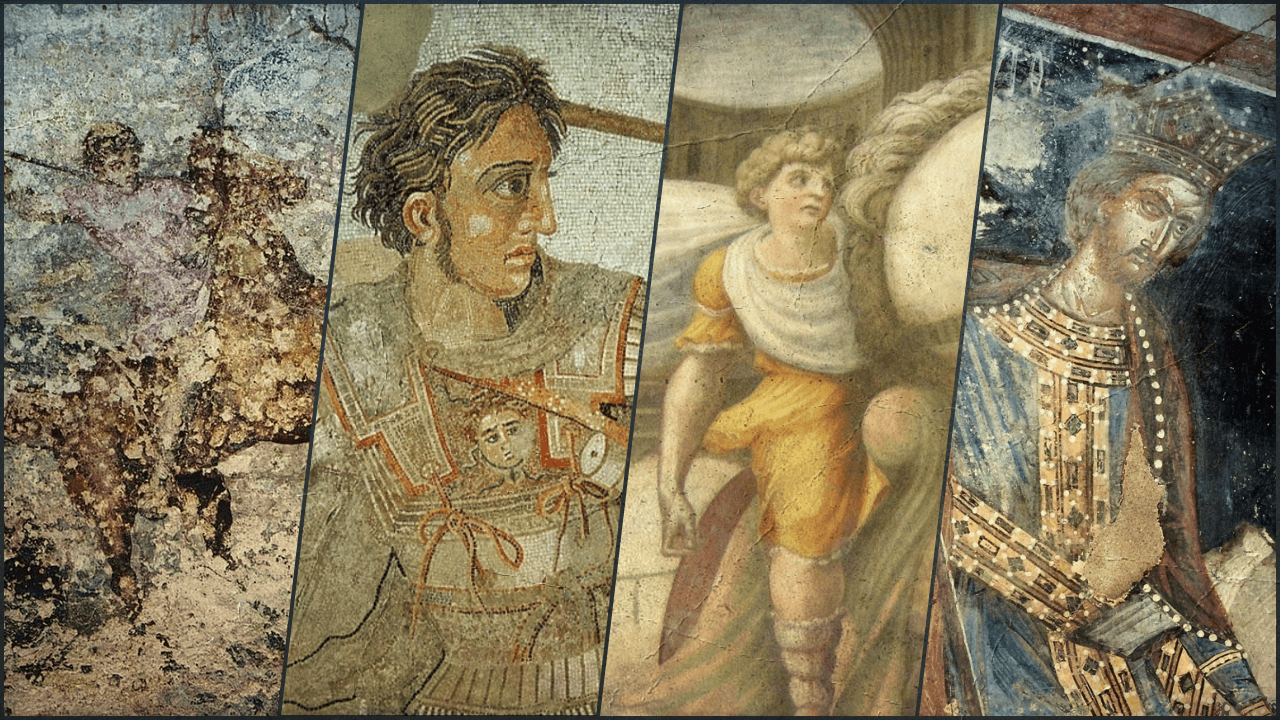
The Many Faces of Alexander the Great: Artistic Depictions Across Eras
Alexander the Great is a name that echoes through history, not only as a conqueror but as a cultural icon whose image has been sculpted by the hands of time and art. His persona has transcended the boundaries of a mere historical figure to become a symbol deeply ingrained in the artistic and cultural consciousness of successive civilizations. This article delves into four distinct artistic representations of Alexander the Great, each from a different era, showcasing the evolution of his portrayal and the diverse interpretations of his character and achievements.
1. THE HELLENISTIC HERO: FRESCO FROM PHILIP’S TOMB AT VERGINA (330 BC)
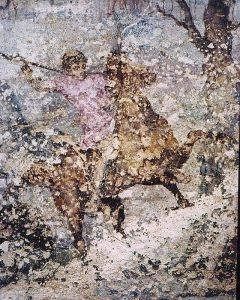
Our journey begins in the 330s BC, almost at the cusp of the Hellenistic era, with a fresco from Philip’s Tomb at Vergina. This image portrays Alexander as the quintessential Greek hero—young, athletic, and engaged in a hunting scene—a popular theme in Greek art symbolizing nobility and prowess. This depiction is steeped in the classical Greek artistic tradition, highlighting Alexander’s connection to the aristocratic heroic narratives of ancient Greece as an embodiment of their ideals and virtues.
2. THE ROMAN PERSPECTIVE: ALEXANDER MOSAIC FROM POMPEII (1ST CENTURY BC)
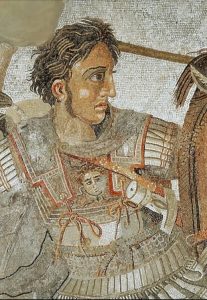
Fast forward to the Roman era, and we encounter the famous Alexander Mosaic from the House of the Faun in Pompeii. This stunning mosaic captures the Battle of Issus, with Alexander at its epicenter, a testament to his military genius and charismatic leadership. The Roman style’s emphasis on dramatic narrative and realism brings a new dimension to Alexander’s image, reflecting the Roman admiration for his strategic brilliance and the Hellenistic influence on Roman culture.
3. RENAISSANCE REVIVAL: ALEXANDER BUCEPHALUS AT VILLA FARNESINA (15TH CENTURY)
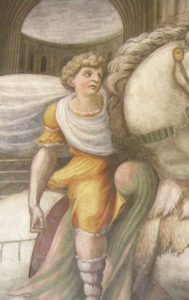
In the 15th century, at the height of the Renaissance, the depiction of Alexander shifted significantly. The Alexander Bucephalus of Villa Farnesina in Rome reflects the era’s rediscovery and fascination with classical antiquity. The Renaissance ideals of individualism, human emotion, and balanced composition are evident in this portrayal. Alexander, alongside his famed horse Bucephalus, is depicted with a renewed humanistic approach, bridging the ancient world with new Renaissance values.
4. BYZANTINE MAJESTY: ALEXANDER AT THE CHURCH OF ST. DIMITRIOS, PALATITSIA VILLAGE (16TH CENTURY)
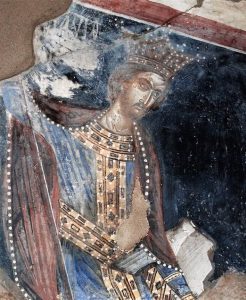
The final stop in our artistic journey is the 16th-century depiction of Alexander in the Church of St. Dimitrios in Palatitsia Village. Here, Alexander is portrayed in a religious context, among the kings of the Apocalypse, in Byzantine emperor attire. This unique representation fuses historical and religious iconography, depicting Alexander as a mature, semi-divine figure. The inscription confirms his identity, showcasing how Alexander’s image was adapted in various cultural and religious frameworks.
The artistic journey of Alexander the Great, from a fresco in a royal tomb to a revered figure in a Byzantine church, reveals the multifaceted perceptions of this legendary figure. Each era, from ancient Greece to the Renaissance and beyond, has reinterpreted Alexander’s legacy, molding his image to fit their cultural and artistic ideals. These depictions are not just portraits of a historical figure but are narratives that speak of the times they were created in, the values they upheld, and the everlasting allure of Alexander the Great—a hero, a strategist, and a symbol of greatness that transcends time and culture.